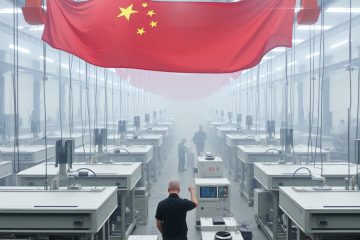NVIDIA Omniverse: The Next Big Profit Engine for Virtual Experiments

NVIDIA Omniverse is a real-time simulation and collaboration platform that’s redefining how businesses, researchers, and creators build virtual worlds. It’s not just about 3D graphics—Omniverse enables true-to-life digital twins, AI-driven automation, and large-scale simulations, opening up massive profit opportunities across industries.
The fascinating part? Omniverse is starting to resemble the Matrix, not in a sci-fi, dystopian way, but as a digital world where anything can be simulated before happening in reality.
Let’s explore how Omniverse could become the next leading profit engine for businesses through virtual experimentation.
1. Omniverse as the Ultimate Virtual Experimentation Lab
Omniverse creates realistic, physics-accurate virtual environments where companies can run experiments before committing resources in the real world.
Imagine testing:
• A new car design in a virtual crash test instead of destroying real prototypes.
• A manufacturing workflow to optimize efficiency before spending millions on real-world implementation.
• Autonomous robots and AI agents in a digital city before deploying them in the real world.
Every successful simulation saves money, reduces risk, and accelerates innovation, making Omniverse a goldmine for businesses.
2. Digital Twins: The Key to Unlocking Profitability
A digital twin is a virtual replica of a real-world system—a factory, city, car, or even an entire supply chain. With Omniverse, companies can create ultra-precise digital twins to optimize operations and maximize profits.
• Factories: Companies like BMW use Omniverse to design and test production lines before physically building them, reducing waste and inefficiency.
• Retail: Brands like Lowe’s use Omniverse to simulate store layouts and customer behavior, maximizing sales and improving customer experience.
• Cities: Governments can simulate traffic patterns, climate effects, and disaster responses in a digital twin before making billion-dollar infrastructure decisions.
The ability to test, tweak, and perfect things virtually before real-world execution is a game-changer—and a highly profitable one.
3. The Omniverse-Matrix Parallel: A Digital World Mirroring Reality
In The Matrix, humans live inside a simulated reality without realizing it. While NVIDIA’s Omniverse isn’t tricking us into believing we’re in a different world, it mirrors reality so accurately that virtual experiments can replace real-world ones.
Similarities to The Matrix:
• Omniverse is photorealistic and physics-accurate, making simulations nearly indistinguishable from real-world environments.
• AI entities (digital humans, robots, self-driving cars) learn and evolve inside Omniverse, just like AI agents in The Matrix.
• People collaborate across Omniverse’s interconnected digital world, much like in The Matrix, where minds interact within the simulation.
This “mirror world” capability is what makes Omniverse a billion-dollar opportunity—it allows companies to create, experiment, and perfect systems in a risk-free digital realm before implementing them in reality.
4. AI and Automation: A Profit Multiplier in Omniverse
NVIDIA’s Omniverse is also a training ground for AI and robotics, giving businesses a huge competitive edge:
• Autonomous Vehicles: Tesla and others can train self-driving AI in hyper-realistic virtual cities, saving billions in real-world testing costs.
• AI-Powered Chatbots & Avatars: Businesses can train virtual customer service agents inside Omniverse, refining AI interactions before deploying them.
• Logistics & Warehousing: Companies like Amazon could simulate AI-driven warehouses, optimizing efficiency before real-world rollout.
With AI automation improving inside Omniverse, companies can cut labor costs, reduce risks, and scale faster than ever.
5. The Future: Omniverse as a Digital Economy
Right now, Omniverse is mostly used for enterprise simulations, but its potential extends beyond that. In the future, it could power:
• A decentralized virtual economy, where users trade digital assets, train AI models, and sell virtual services.
• AI-generated content, allowing businesses to create entire marketing campaigns, product designs, or training programs inside Omniverse.
• A metaverse-like platform, where collaboration happens in ultra-realistic virtual spaces instead of traditional 2D screens.
As businesses adopt Omniverse, NVIDIA could monetize computing power, AI tools, and cloud-based virtual environments, turning it into a multi-trillion-dollar ecosystem.
Conclusion: Omniverse is the Future of AI-Driven Virtual Experimentation
NVIDIA Omniverse is more than just a 3D tool—it’s a virtual world where businesses can simulate, optimize, and profit from AI-driven experiments.
With:
✅ Physics-accurate digital twins
✅ AI-powered automation
✅ Limitless experimentation without real-world risk
Omniverse reduces costs, speeds up innovation, and enables businesses to maximize efficiency like never before.
Just like The Matrix, it’s a digital realm that mirrors reality—and in this case, those who control it could be the next dominant force in the AI-driven economy.



0 Comments